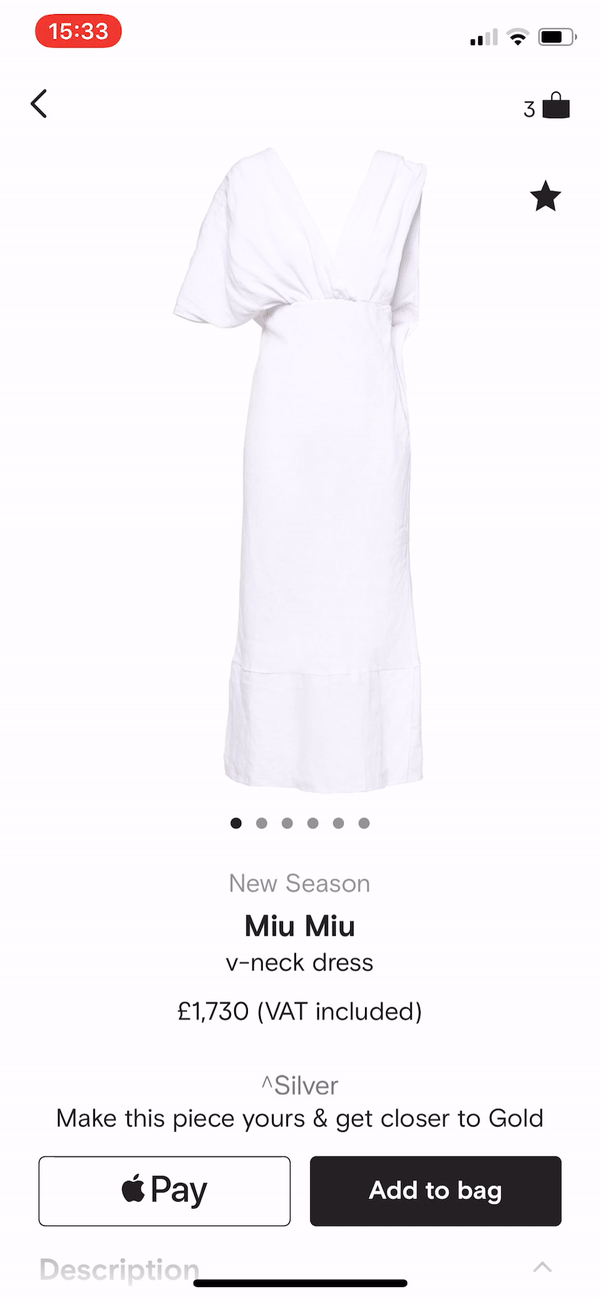Relevant and timely product notifications
Keeping user engaged, and product away from churn with relevant notifications
As Design Manager for Acquisition & Engagement at Farfetch, I led design strategy in a three-year transformation program, tackling key user journey challenges with data-driven solutions. This use case is one piece of a broader three-year roadmap.
User Problem: Farfetch’s users who missed out on high-demand items often abandoned the experience, frustrated by a lack of stock visibility and timely alerts. This gap led to lost sales and reduced customer satisfaction. Users needed a seamless, anticipatory experience that connected them to products they cared about.
Users Findings through Data + Research
1) One-to-One vs. One-to-Many: Working on 1-to-1 instead of 1-to-many seemed to work in the past in terms of impact, it seems to be all about relevance and that we should focus on what a particular user is looking for.
2) Personalized Engagement: Research showed that personalized alerts (based on user behavior and preferences) significantly increased engagement and conversion, as users were more likely to respond to alerts that matched their shopping interests.
Listing Opportunities for Relevant Notifications
Back in Stock Push Notifications from your Wishlist:
Designed an unobtrusive yet immediate push notification experience that informs users as soon as an out-of-stock item returns. The notification design focuses on clear product imagery and a compelling call-to-action ("Tap to Shop") to encourage quick action.Your Favorite Pieces, Lower Prices:
Added a personalized notification feature that alerts users when items on their wishlist or previously viewed items go on sale. This design highlights the price reduction visually with a clear "Now on Sale" label and emphasizes potential savings. By connecting users with relevant, lower-priced items they already love, this feature increases purchase intent and strengthens the perception of value.Low in Stock Alerts:
Designed urgency-driven alerts that appear on the product page and as push notifications, using bold visuals and limited-time language (“Only a few left!”) to encourage immediate decisions. The design minimizes intrusion but emphasizes the urgency to drive conversion.
Results and Overall Impact
Enhanced User Engagement: The redesigned stock alerts offer a frictionless, personalized experience that makes users feel informed and empowered. Design refinements focused on accessibility and intuitive UX resulted in higher engagement rates.
Improved Conversion Rates:
Back in Stock Push Notifications saw a CR uplift to 3.81% (compared to a benchmark of 1.29%), proving that timely, well-designed notifications keep users engaged.
Email and Push Retargeting Campaigns increased conversion and average order value, as users responded positively to reminders that felt relevant and helpful.
Revenue Growth via Personalization: Personal recommendations on transactional emails led to a conversion rate of 7.12% on related products, underscoring the impact of design-driven personalization.
Short Related Usecase
Multi-Channel Approach
We expanded the alerts system beyond push notifications to include email communications, creating a simple but effective multi-channel strategy. This included:
Custom email templates for Back-in-Stock, Price Drop, and Low Stock alerts
Basic preference controls so users could choose their preferred channel
Consistent messaging across both notification types
Design Manager for Acquisition of Engagement during 3 years, with a complete vertical strategy
This use-case is part of a bigger story
As Design Manager for the Acquisition & Engagement vertical at Farfetch, I led design strategy across multiple initiatives during a comprehensive 3-year transformation program. Our team tackled key challenges across the user journey—from discovery to retention—with data-driven solutions.
Key projects included:
Back in Stock Notifications: Created push and email alerts achieving 3.81% conversion rates (vs 1.29% benchmark) for products returning to inventory
Dead-End Mitigation: Transformed out-of-stock experiences with recommendation modules, driving +2.99% to +8.59% add-to-bag rates.
Low Cost Acquisition: Enhanced social sharing capabilities with custom integrations to increase app downloads and drive brand advocacy
App Adoption: Optimized app banners and login experiences with Face/Touch ID to strengthen user engagement
First Action Optimization: Redesigned filters, navigation, and PLP experiences to improve user journeys and increase conversion rates
Authentication Improvements: Implemented Apple Sign-In and modernized login systems to meet regulatory requirements while enhancing the user experience
These initiatives collectively transformed the customer experience while driving significant business impact across acquisition, engagement, and conversion metrics.









